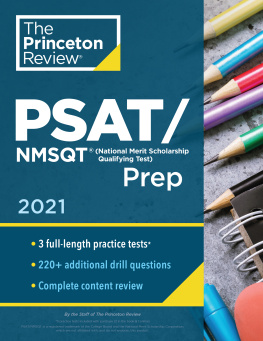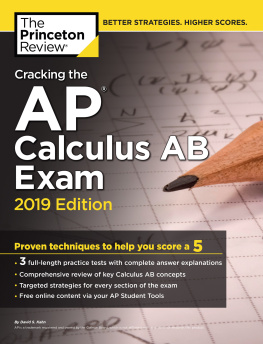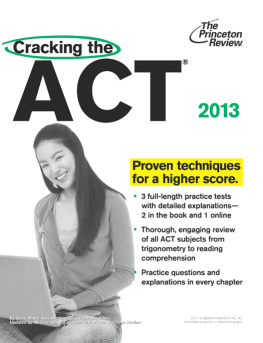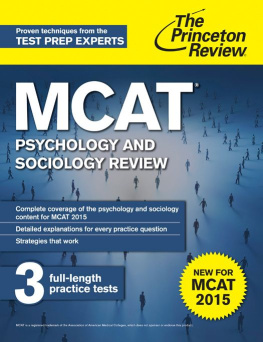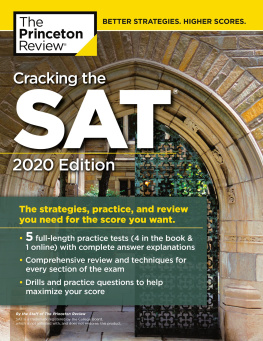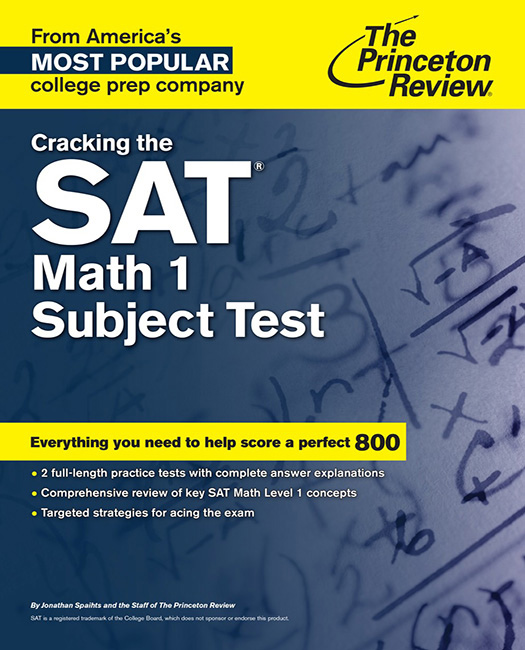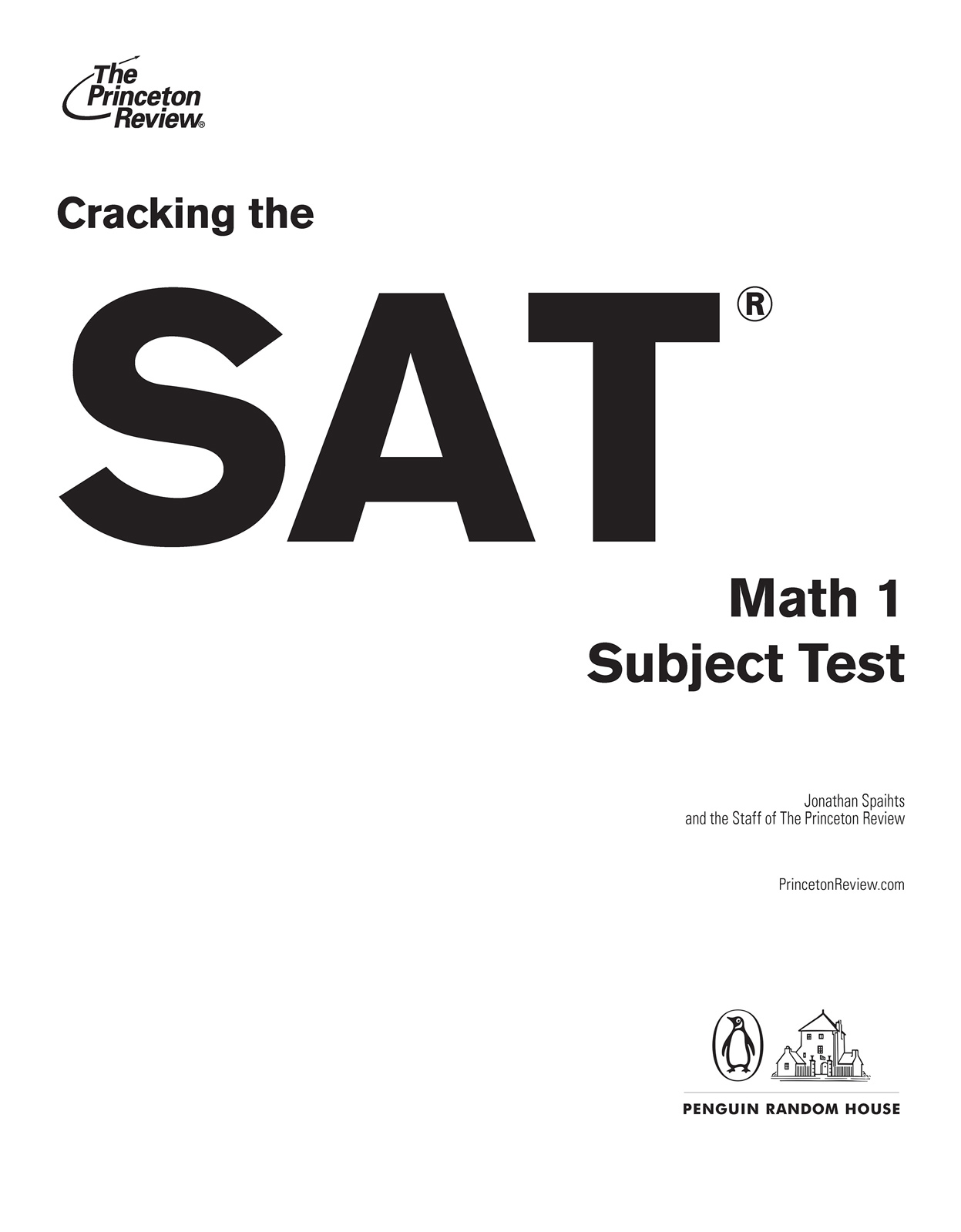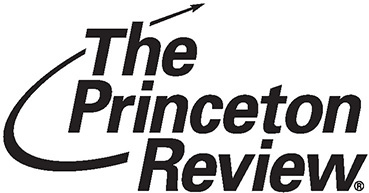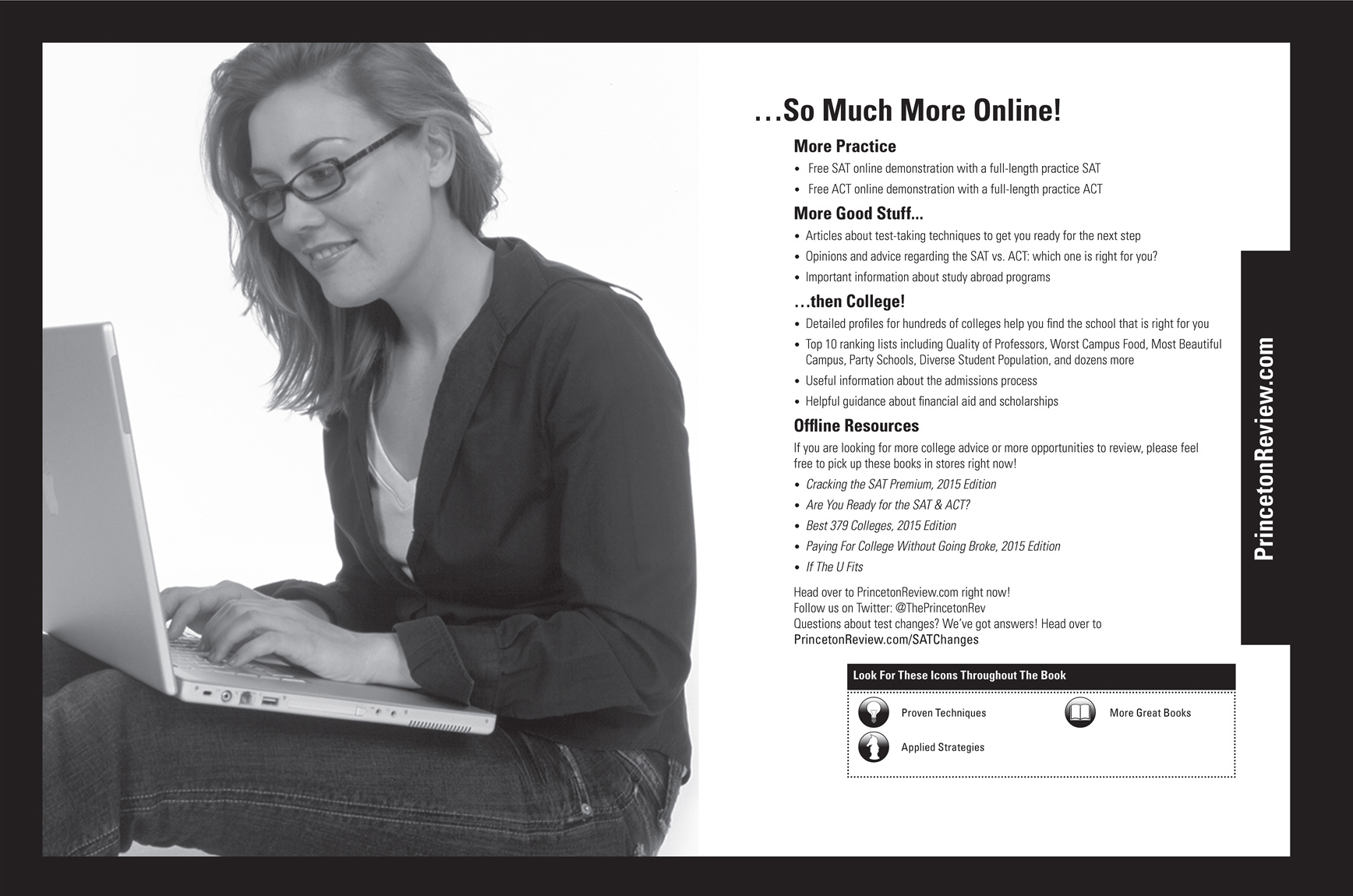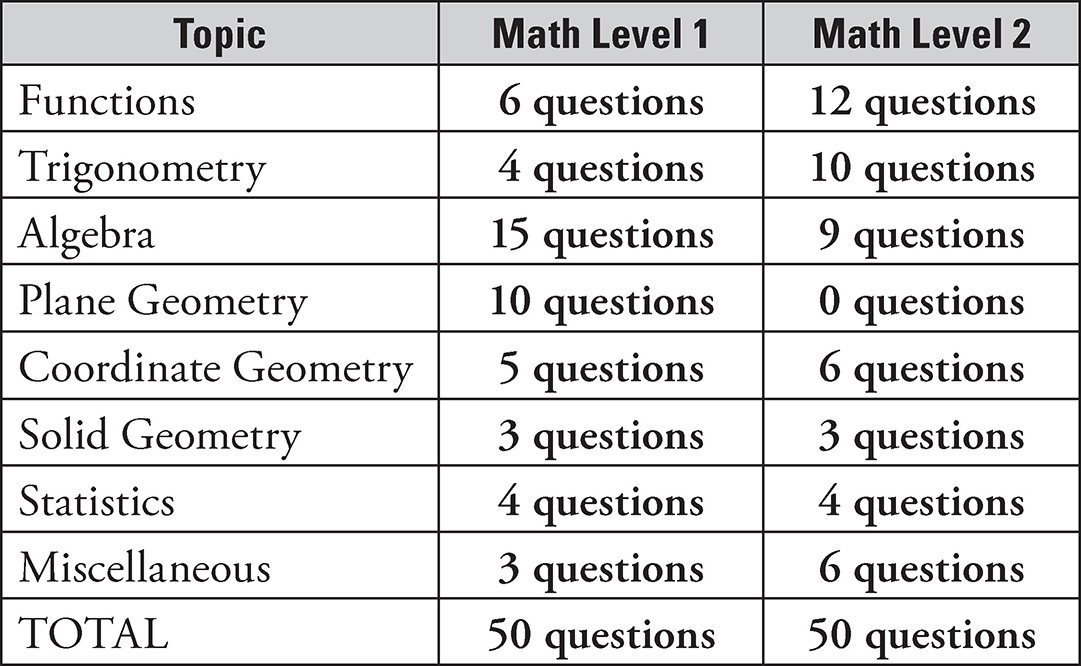Princeton Review - Cracking the SAT Math 1 Subject Test
Here you can read online Princeton Review - Cracking the SAT Math 1 Subject Test full text of the book (entire story) in english for free. Download pdf and epub, get meaning, cover and reviews about this ebook. year: 2015, publisher: Random House Childrens Books, genre: Children. Description of the work, (preface) as well as reviews are available. Best literature library LitArk.com created for fans of good reading and offers a wide selection of genres:
Romance novel
Science fiction
Adventure
Detective
Science
History
Home and family
Prose
Art
Politics
Computer
Non-fiction
Religion
Business
Children
Humor
Choose a favorite category and find really read worthwhile books. Enjoy immersion in the world of imagination, feel the emotions of the characters or learn something new for yourself, make an fascinating discovery.

- Book:Cracking the SAT Math 1 Subject Test
- Author:
- Publisher:Random House Childrens Books
- Genre:
- Year:2015
- Rating:3 / 5
- Favourites:Add to favourites
- Your mark:
Cracking the SAT Math 1 Subject Test: summary, description and annotation
We offer to read an annotation, description, summary or preface (depends on what the author of the book "Cracking the SAT Math 1 Subject Test" wrote himself). If you haven't found the necessary information about the book — write in the comments, we will try to find it.
This eBook edition has been optimized for on-screen viewing with cross-linked questions, answers, and explanations.
We dont have to tell you how tough SAT Math is--or how helpful a stellar exam score can be for your chances of getting into your top-choice college. Written by the experts at The Princeton Review, Cracking the SAT Math 1 Subject Test arms you to take on the test and achieve your highest score.
Techniques That Actually Work.
Tried-and-true strategies to help you avoid traps and beat the test
Tips for pacing yourself and guessing logically
Essential tactics to help you work smarter, not harder
Everything You Need to Know to Help Achieve a High Score.
Expert subject reviews for every test topic
Up-to-date information on the SAT Math 1 Subject Test
Score conversion tables for accurate self-assessment
Practice Your Way to Perfection.
2 full-length practice tests with detailed answer explanations
Practice drills throughout each content chapter
End-of-chapter summaries to help you master key points
Princeton Review: author's other books
Who wrote Cracking the SAT Math 1 Subject Test? Find out the surname, the name of the author of the book and a list of all author's works by series.

